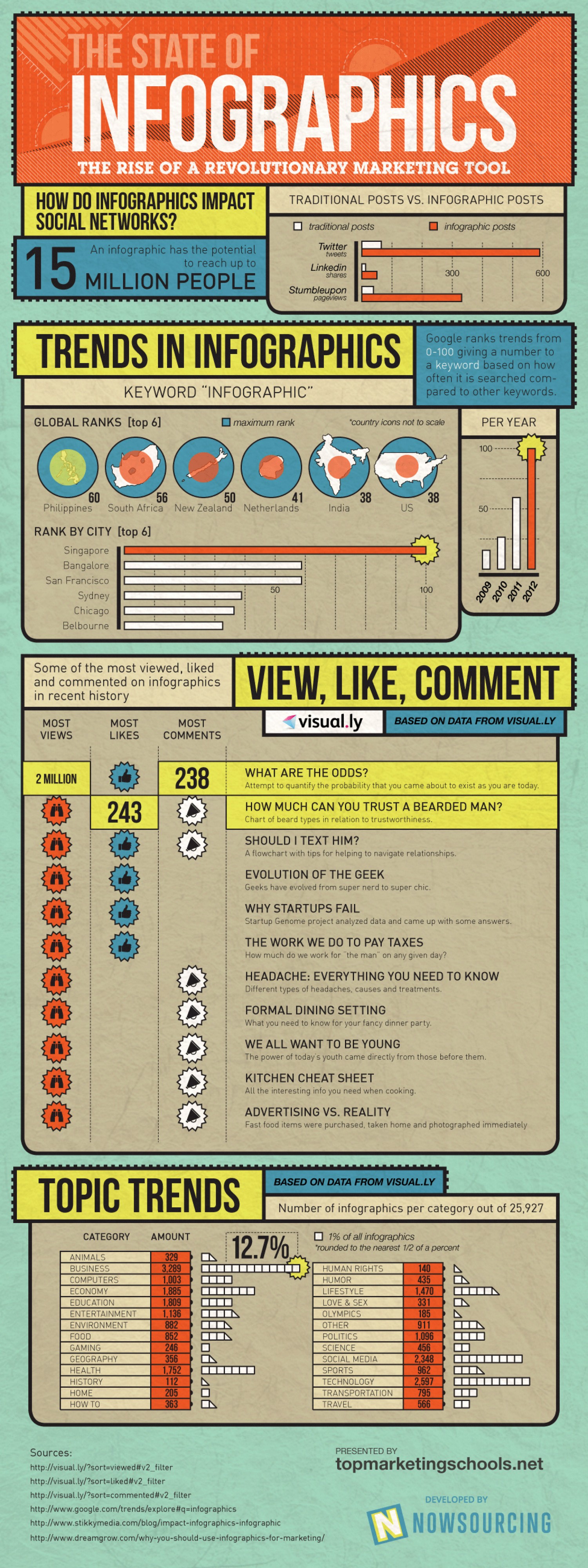You've done everything you're supposed to. You created an amazing business plan and you offer the best goods/services in your industry. You've made yourself and your business accessible and you're ready to get to work.
So, why isn't your phone ringing?
Unfortunately, your competitors have done exactly the same thing. Want to cut through the noise of the busy world, you have to stand out from the crowd and get noticed? That's where marketing comes in!
When marketing a small business, be strategic and creative. You may not have the same budget as large corporations, but you still have to compete with them. That's why we put together this series dedicated to small business marketing tactics. Welcome to part one!
Free Online Marketing Strategies
1. Content
If you've spent any time with the marketing crowd, I imagine you're sick of the 'importance of content' being crammed down your throat. So, I promise this is the only time I'll do that...in this article.
When we talk about content, we're referring to stuff that is written on your website. That means everything from the description of your services to your blog posts. The content on your website is how you tell customers, and Google, what you're all about.
Many of our website clients will comment that their website is "too long" and say that "no one is going to read that". That may be true, but that's fine. It's not meant for people. It's meant for Google. When it comes to Google getting a clear picture of your business, you can never have too much good, relevant content.
So, as a great marketing strategy, you should create a blog and write industry-related content. Essentially, Google will scan your content for keywords and topic relevance. Content is judged by how easily it reads and its seeming authority on the topic.
2. Social Media
Social media marketing (SMM) isn't the place for sharing ads and posting coupons. In fact, studies show that sales-y social media posts don't get as much engagement. So, before you get started with social media, remember, SMM is entertaining, not self-serving.
Social media should be used to give your brand a voice and a personality. Humanizing your brand by making it a character allows people to relate to you and encourages trust in your company.
A survey performed by Inc. found that only 11% of millennials don't like it when brands have online personalities. Personally, I unfollow most brands when they push too hard for sales. Ironically, I don't like being sold to any more than you do! I expect a little humor with my company updates.
Your brand can be silly, witty, rugged, intellectual, and anything between. Take some time to define your brand's personality before engaging customers on social media. Every post should fit into your brand's personality. And try not to break character, it can cause you to lose the trust you've built.
3. Email (newsletters, surveys, pitches, etc.)
I've said it before, and I'll say it again... email marketing is alive and strong! A well-organized email list is like gold. Your customers are an untapped wealth of knowledge. If you're not comfortable sending them pitches, try bringing them to your lovely content with newsletters.
Or, even better... run customer satisfaction surveys. You may think you know what is important to your customers, but you probably don't. Satisfaction surveys give insight on what's important and what you can do to make your company better.
However, you need to listen to the answers and implement the necessary changes. In a survey performed by Vision Critical, they found that 87% of survey participants said that they wanted to have a say in the company's future. So, if you're not digesting the feedback, customers will be less likely to give it.
4. Infographics
Did you know that three days after being given information, you'll remember 10% of it; however, if that information is paired with a picture, you'll remember 65%. That's crazy!
Not only are humans incredible at remembering images, we also love to share them. Did you know that Infographics are liked and shared 3 times more than other forms of visual marketing? That means that your infographics will go a lot further than your normal reach.
Here's an infographic about infographics:
I think the scariest thing about creating an infographic is making its pretty, and unfortunately, I can't teach creativity. However, there is a great free tool called Canva that makes it easy to create eye-catching infographics in just a few minutes.
5. Videos
As with infographics, a video pairs information with images, which helps retention of your information. Also, social media posts with video get consumed more often than simple text social media posts.
I admit that videos aren't for everyone. But, if you have a good sense of humor and don't mind getting in front of a camera, your video could go viral! Viral videos cause brand awareness to skyrocket, as well as bring in more website traffic (boosting your ranking) and more customers.
Provided you don't make a Pepsi-sized PR mistake with your video, you have nothing to lose.

6. Awards
Applying for awards is an underutilized local marketing tactic. Most local magazines have a 'best of' awards issue at least once a year. Google "best of [city]" and you'll find them.
Every award will have different criteria and not all are free. So do a little research and find out how you can get nominated for your local awards.
When you get nominated and/or win one of these awards, you'll not only get notoriety, but you'll get a link back to your website from the magazine.
7. Contests (online/offline)
I managed a grooming salon/daycare called Smelly Dog here in Phoenix in a previous life. To promote our healthy dog food, we ran a doggy weight-loss contest. The rules of the contest were simple: Pet owners brought their chubby pup in during the first month of the event to be weighed on our scale. They returned for a weigh-in over the next five months. The dog who lost the most weight got a free six-month supply of our healthy dog food.
This contest achieved a few things:
- First of all, doggy obesity is an epidemic that most dog owners are not knowledgeable about. So, it opened up the door for us to help them help their pet.
- That education led to more conversation about the role dog food plays in their pet's health, usually converting them to dog food customers.
- It also brought them back to the store every month when it just made sense to buy more dog food at the same time.
- Finally, once they saw the difference in their pet's health on the new food, they were usually converted to lifelong customers.
To be continued...
Welp! That sums it up for our free online small business marketing ideas. Hopefully, you implement some of these online strategies to the benefit of your brand.
Stick around! Next week our series continues with free small business marketing ideas that take place in the offline world!




Your Comments :